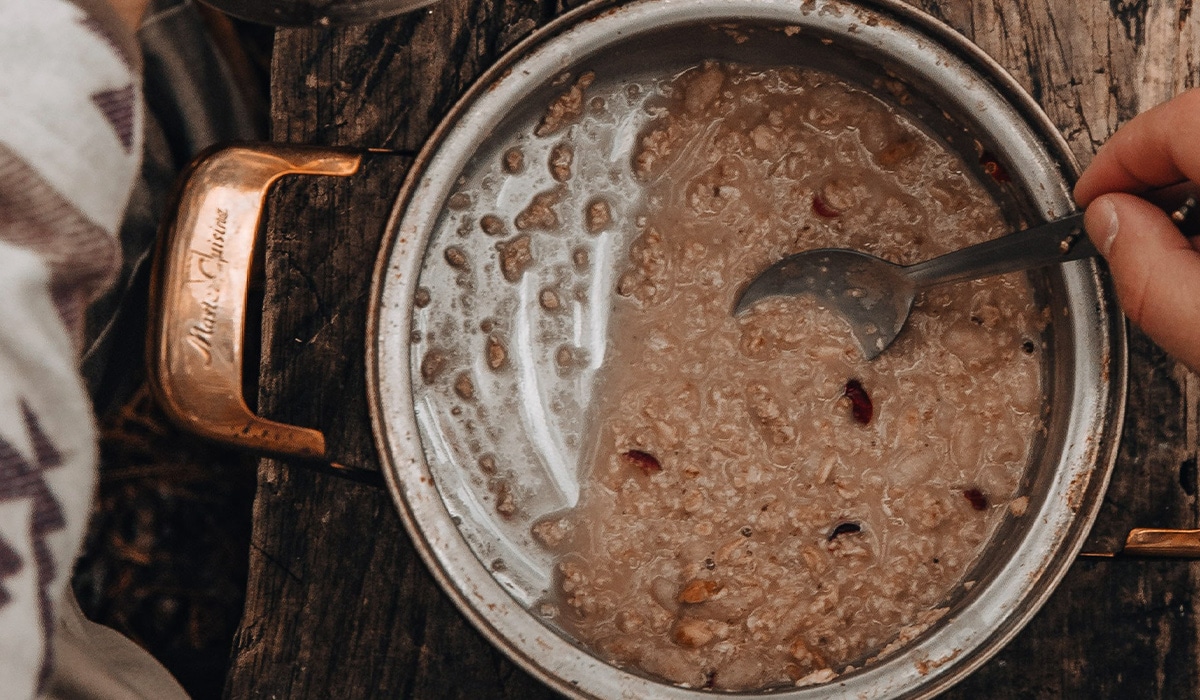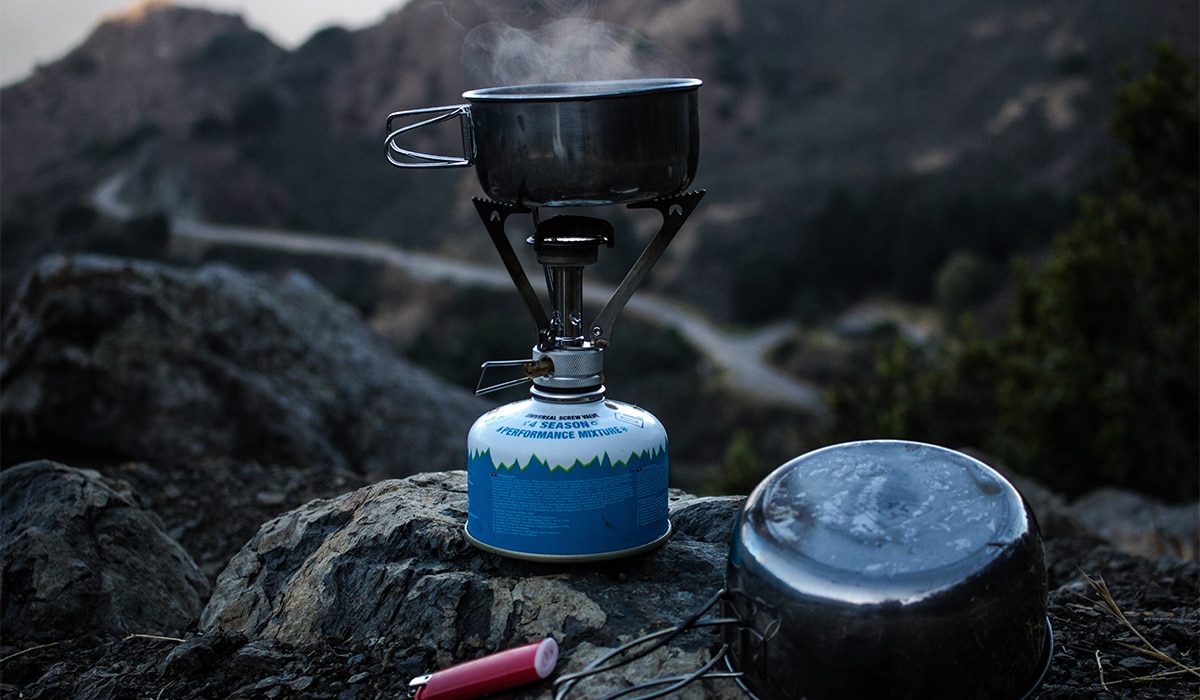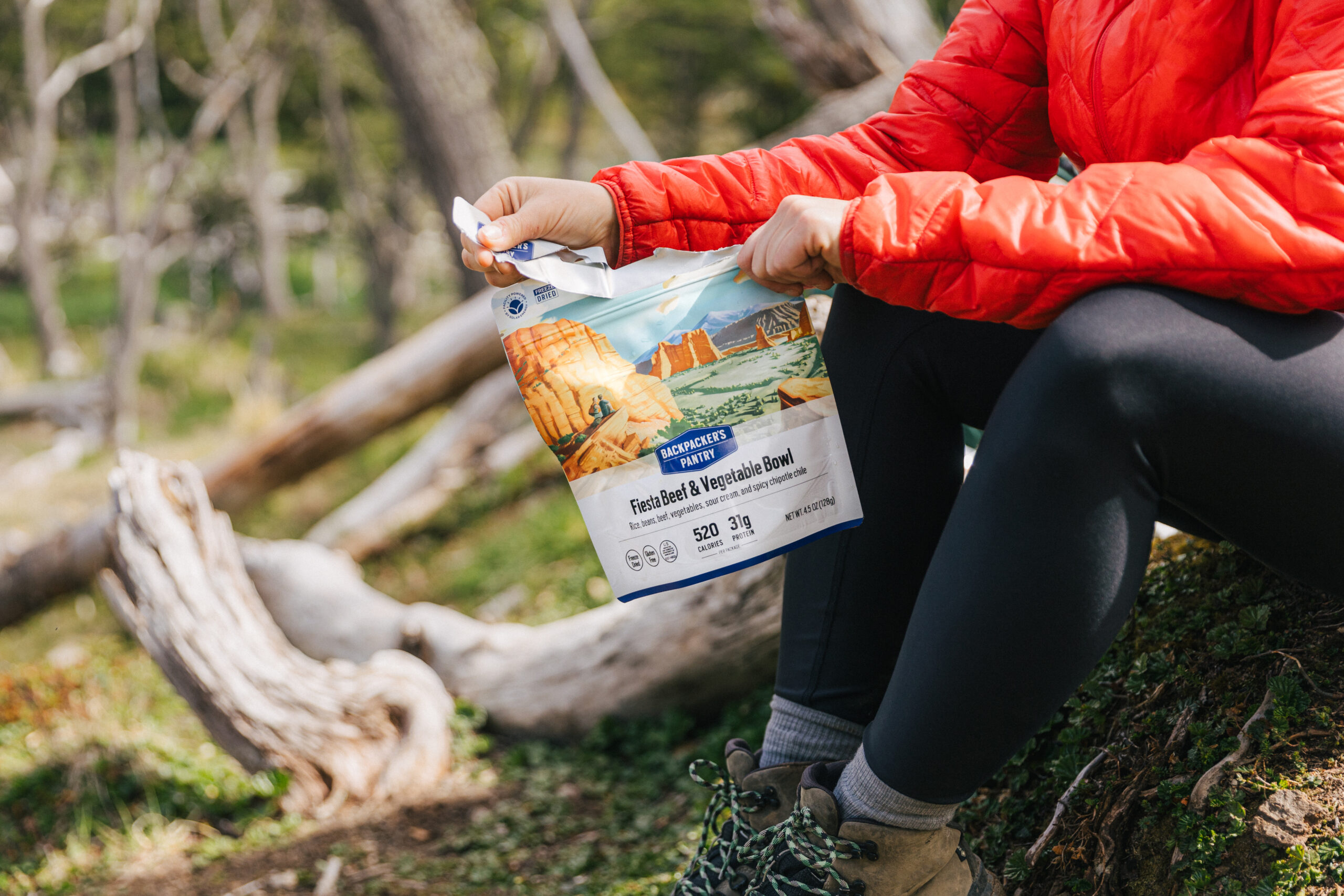Food to Fuel Your Adventure
There are several factors that determine how far and fast you can go on an adventure—ones that also dictate how enjoyable your day will be. Training leading up to it, gear choices, mental prep, and your reason “why” are critical to ironing out days, months, or even years in advance. That way, on game-day the one thing you can home in on is fueling.
How much and what you eat are both important, especially on big days. I bring snacks for any activity longer than 90 minutes and never do any fasted training. This is especially important for women, where hormonal responses to low energy states can lead to fatigue, bone stress injuries, reduced metabolic rates and weight gain, and in cases of long term perturbations even contributing to reproductive health issues, according to dietician Kylee Van Horn . Also, adventuring hungry just isn’t fun!

Let’s Start With Breakfast
What I eat before my big days or long races depends on when they begin. If I can get a later start, I love making a big bowl of oats when I wake up knowing that I’ll have at least two hours or more to digest. I cook oats on the stove with milk (any non-dairy alternative works too) and add fruits, nuts, and maple syrup for a rounded breakfast full of micronutrients, carbs, protein, and a small amount of fats. There are many other options for breakfast; aiming for around 500-700 calories, low quantities of fiber and fat, and around 10 grams of protein, you can create a variety of meals that suit your taste. It’s important to remember the protein as it allows for carbohydrates to be released into the bloodstream more slowly so that you don’t wind up with rebound hypoglycemia (a quick blood sugar spike and drop that can leave you feeling sluggish during exercise). With fueling, a lot that depends on one’s own gut, and the best way to figure out what works is to try a variety of options.
For those spring skiing objectives and summer high mountain peaks with 4 a.m. start times, eating two hours before often isn’t really feasible. I also find it hard to eat a full meal at hours I’m normally asleep, but with practice I’ve managed to teach myself to eat something. I usually opt for easy alternatives; sports bars and bananas are the usual suspects. Since most bars come with little protein, supplementing with nut butters is often a good way to round your meal. You can also find sports nutrition products with the right amount of protein already included. Spring Bar is just one example that I often use for early morning snacks. It doesn’t have to be complicated—using the same products you would use during the activity (something like Spring energy gels and hydration mix) to fuel yourself early in the morning is great for those early morning start times.
In-Field Fueling
Then you set off! Fueling during adventures is just as important as fueling before. What I eat greatly depends on the type of adventure; races require mostly carbohydrate-based snacks that are quick to eat and longer adventures with time to stop usually involve more solid food. It also depends on an individual; I like my snacks to be mostly sweet while others want more savory options.
Regardless of your choice of fuel, aiming for 200-300 calories, around 30-90 grams of carbs, and 16-20 ounces of liquid (preferably with electrolytes) per hour is the minimum to sustain performance, energy levels, and mental focus. Proper nutrition intake gives your body a chance to enjoy and grow from the adventure rather than fall in an energy deficit by the end. Keep in mind that these recommendations will vary depending on the athlete body frame size, distance covered, terrain, and climate.
Pack For the Weather
In the winter months, I focus on foods that are more resistant to freezing and still taste good if they’re cold. I try to keep them as close to my body as possible; inner pockets of clothing, race suits, or anywhere your body heat will keep them warm. If you’re using a hydration bladder for the liquids, keeping the hose warm is essential. You can buy neoprene sleeves or tuck it into your jacket ensuring to blow back excess water into the bladder and out of the tube. If you put your bottle in the backpack, stash it close to your back and under layers of clothing. Adding electrolytes lowers the freezing point as well.

In terms of what I bring, I mostly rely on energy gels and crispy bars. I’ve never experienced a Spring Energy gel freezing and their Wolfpack flavor packs a lot of calories into a small pouch that is convenient. Crunchy bars crumble the same at any temperature and baked goods like muffins also tend to keep well. As long as you check the nutrition information to make sure you’re eating enough calories and carbs, you can bring anything that you like from gels to mashed potatoes, or cakes.
In hot summer months, the primary concern is staying hydrated, especially on longer outings. Sodium intake needs to be increased due to higher temperatures and humidity, so bringing enough water becomes a challenge. When I know water sources will be available, I like using a filtration soft flask to refill instead (Katadyn and Salomon are just two of the brands that make one), but I always make sure to check the conditions making sure creeks are running and aren’t dried out.
Depending on the distance and terrain of the outing, calorie requirements may stay the same or vary throughout the seasons, and as a result, foods I choose to bring on my adventures also change. In the summer, I opt for more refreshing options; fruity energy gels (Cannabery and Awesome sauce from Spring are my favorite), non-chocolate bars so they don’t melt, gummy bears, dried fruits (dates are especially energy dense and great fuel), liquid calories from fruit juices, etc.
Real Deal Meals

What about real meals? You can only eat snacks for so long, and the really long days sometimes call for breakfast, lunch, and dinner. Despite popular belief, you don’t need a stove to make these. There are several options for cold-cook meals that only require water and time. You have to plan ahead as those meals take a while to “cook” but come out pretty delicious. I’ve tested them in multi-day adventure races and they were a respite from snacking and very satiating. On the more expensive end of the spectrum, you can buy pre-made complete meals in a pouch. But you don’t have to feel limited by those options – there are several meals you can make yourself. You need a waterproof container (jars work, though they are on the heavier side of things; I usually just go with ziplock bags, making sure I save, wash, and reuse them after the trip) and foods that can be prepared with cold water. Some of the main ingredients are quick oats, ramen noodles, instant rice, instant mashed potatoes, and couscous, and you can add spices, dehydrated vegetables, smoked/canned meats, and powders. A quick google search yields many recipes to take with you on your next adventure.
Elite Benefit: Save on Backpackers Pantry
onX Backcountry is proud to partner with Backpacker’s Pantry and offer our Elite members exclusive discounts on their freeze-dried meals to fuel your next adventure. Unlock 15% off Backpacker’s Pantry when you sign up for onX Backcountry Elite
Bottom Line
The options for fueling are endless and every individual will develop their own preference for what works. Just like with physical training, your stomach needs training too and practicing nutrition on shorter outings pays off for the bigger objectives. As long as you’re getting enough fuel, there are multiple ways to do it. Things that work on one adventure might not work on another; in fact, fueling plans SHOULD change based on climate and terrain, so it’s important to practice. Have foods that you know you love and then foods you know you can eat no matter what. And if you’re going with a bigger group, bring things to share! Usually, after hours of being outdoors, other people’s snacks might become more appealing than your own. Trying new things, just like seeing new places, is a big part of adventuring outside.